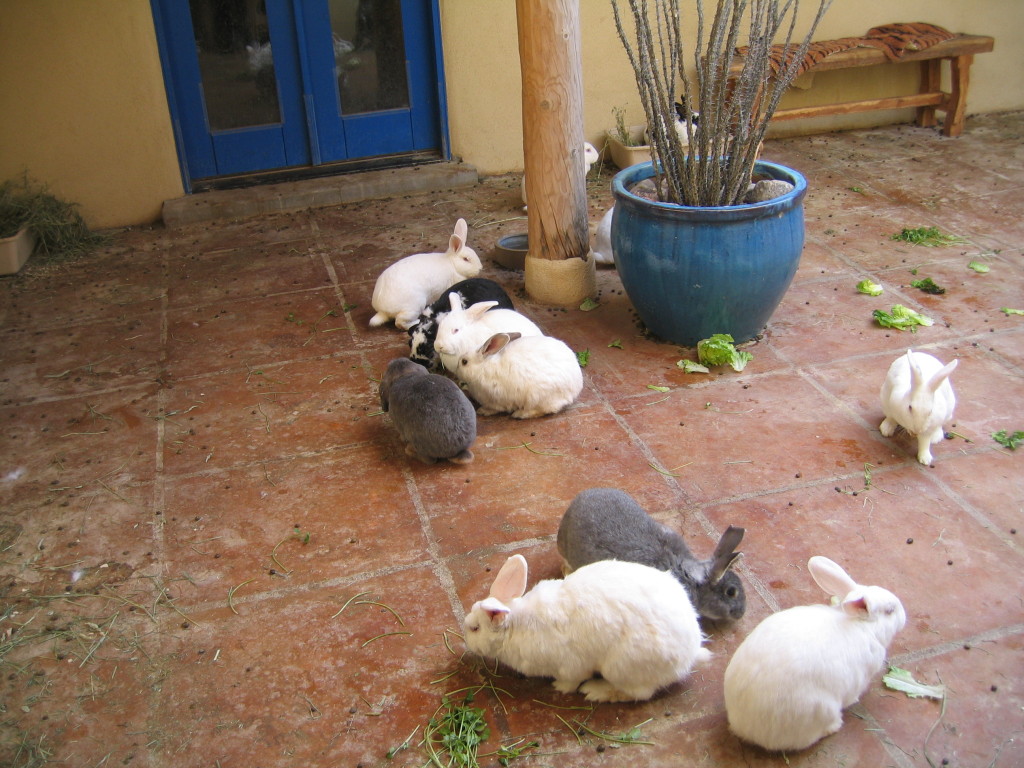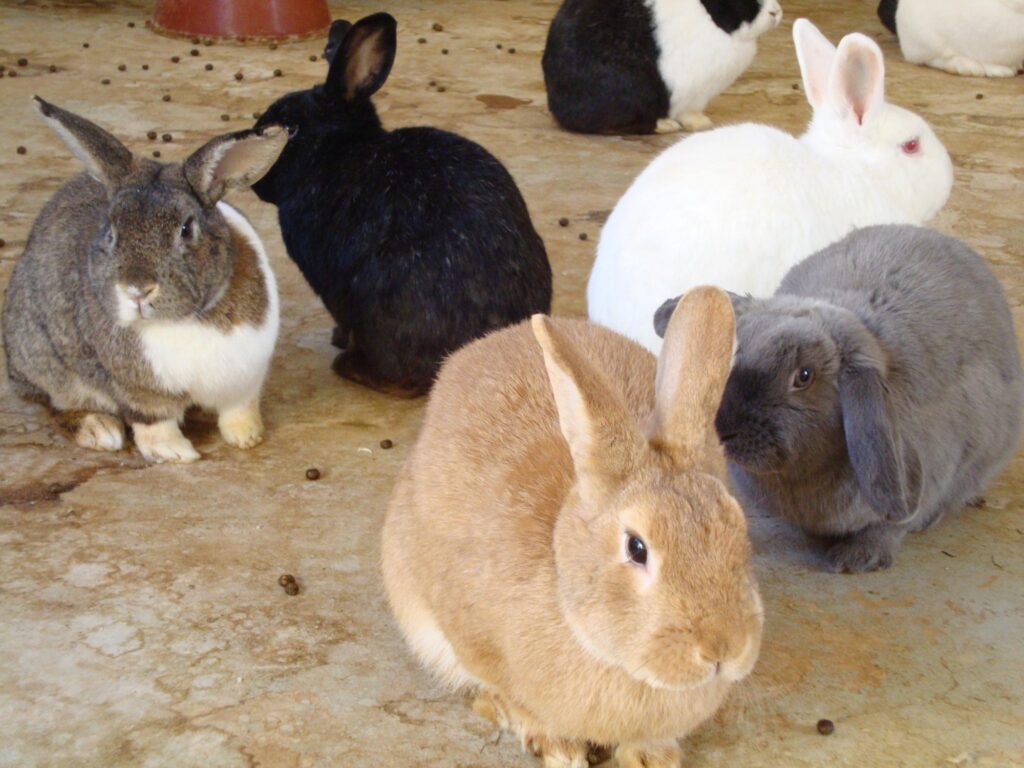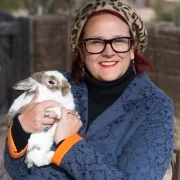I have run a foster home for nine years now. In that time, I have, like many [rescuers and fosterers], taken in more rabbits than have been adopted out. Those who remain weren’t adopted for a variety of reasons—some were not friendly, others had health problems, and still others weren’t chosen for no more compelling reason than their size (big) or their color (white). Because of all these reasons, I now have between 20 and 25 unadoptable, or sanctuary rabbits, and only 2 to 4 adoptable rabbits at any one time. The adoptable rabbits will (hopefully) get adopted to good homes, where they will get plenty of love, care, and exercise, so while the adoptable rabbits are at my foster home, they are caged part time. Sanctuary rabbits, on the other hand, will never go to a permanent home where they will have the run of a household, so they need a lot of space and exercise time at my house. Therefore, I do not cage my sanctuary rabbits.
In the past few years, I have lived in situations as diverse as a big house on 2 acres in the country, in a small house with a roommate, in a large converted warehouse, and now, in a conventional home with a husband and back yard. In all of these situations, the sanctuary rabbits have lived, slept and played in one big group. In the early years, the sanctuary rabbits lived together with the adoptable foster rabbits, but this was somewhat of a hardship for both rabbits and me, since it meant constant new introductions every time a newly rescued rabbit arrived at my house. I also had no means of separating new rabbits who might need to be quarantined from the rest of the group.
In recent years, I keep the adoptable rabbits separate from the sanctuary group, which allows for much greater stability within the sanctuary, since new rabbits are introduced very infrequently. Adoptable rabbits have their own cages in a different room. In my current situation, I have three two story condos set up in the sanctuary-rabbit room with a large rug in the middle of the room, and numerous toys. The rabbits can sleep, eat, and play wherever they like in the room, and mostly choose to spend time with their closest friends. I never close their cages. On days when the weather is nice, I open up the pet door in the door leading to the backyard, and the rabbits can go outside to play. They can go in and out of the house all day, but in the early evening, I chase all the rabbits who are still outside back in. The back yard is set up so that there are 6-foot-high fences surrounding the yard, and within the yard, a second set of fences which demarcates the rabbit play area, and keeps the rabbits in a manageable space. Right now, there is grass in the play area, but eventually we’d like to build a covered deck in part of their area, so they can get some fresh air even in bad weather. I feel that this setup gives my rabbits maximum flexibility and the freedom.
UPDATE

Since writing the previous account, I have moved to New Mexico, where my husband and I had a home custom-built for the rabbits. While still not ideal (it never is!), this new living arrangement is the best I’ve yet had for my sanctuary rabbits.
Our home was built as a series of four wings. All four wings connect to make a square, with an empty square in the middle. One of the wings is devoted to the sanctuary rabbits, while the other three of the house are for me, my husband, and our “own” rabbits plus the special needs rabbits. The empty space in the middle of the four wings is the courtyard, and this is where the rabbits play every day.
The sanctuary group (which ranges from 40 to 60) sleeps in their own wing (which is just a big room with an attached laundry and storage room), and, in the morning, I open up their cat door, and, when the weather is nice, the big “people” door. All day long, the rabbits can come in or out and play wherever they like, with their own friends. At night, at dinner time, they all come back indoors for dinner and to sleep, and I shut both doors.
The courtyard is open to the sky, but is otherwise protected all around by the house. The floors inside and out are concrete, so cleanup is simple. There is a drain in the middle of the courtyard floor so that when I hose down the courtyard, the water has somewhere to go. Unfortunately, I didn’t think to do something similar in the rabbit’s own room.
Because we live in an area where there are coyotes and other wild animals, the dogs and cats can’t go outdoors on their own, so they also spend time in the safe courtyard with the rabbits. As the rabbits in the big group get older, and begin to develop some of the neurological and arthritic conditions associated with old age, they “graduate” to move into the main part of the house with us.

